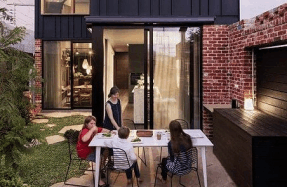
Building without bricks
Architectural Review: Has anything structurally changed in Madrid since 2008? And what do you consider have been the biggest changes post-pandemic? Uriel Fogué: The whole economy of this country was based in bricks. That means the crisis was very hard, because for a few years there was almost no construction at all, no competitions, not many commissions... Changing the inertia is not that easy, because the whole economy was looking for bricks to come back.
In the Spanish economy and worldwide, these crisis situations are happening more and more. In Europe right now, it would be impossible for two emerging 35-year-old architects, such as Renzo Piano and Richard Rogers, to get a project like the Centre Pompidou.the counterculture of the epoch, is no longer happening.


